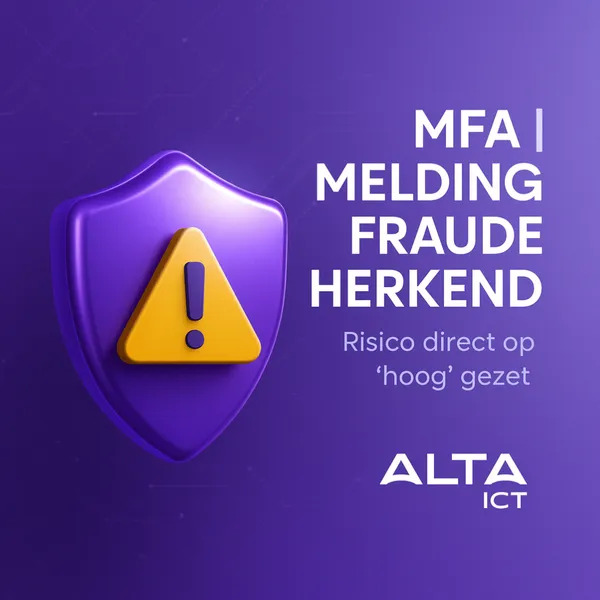
Knowledge base
January 13, 2024
The Risks of Shadow IT and How ALTA-ICT Can Help
Shadow IT is a common phenomenon where employees use their own tools, software or devices without approval from the IT department. This practice can lead to significant security risks for organizations.
What is Shadow IT?
Shadow IT, also known as Rogue IT or Stealth IT, is a term used for all IT resources that are used within a company by employees but are outside the management of the IT department. In other words, all applications, cloud services and hardware that was not approved by your IT department. The IT manager is often unaware of this, so there is no assurance that the software is supported or secure. This makes unofficial data flows more likely, making it more difficult to meet data compliance regulations.
Shadow IT occurs when employees download and use unapproved tools and software to make their work more efficient or easier. This can range from reliable project management tools such as Slack or Trello, to applications with security vulnerabilities such as WeTransfer or Google Docs. These actions create vulnerabilities in an organization’s cybersecurity because the IT department has no control over data access, use and storage. Moreover, these tools may violate privacy laws or industry standards. Shadow IT can lead to data breaches, malware infections, legal problems or reputational damage.
Shadow IT is a common phenomenon in various sectors, whether in small private companies, or in highly regulated political, financial or healthcare organizations. Shadow IT has been around for some time, but in recent years we have seen a huge increase, which is related to the introduction of cloud computing and the trend of BYOD (Bring Your Own Device). With the corona crisis and increased working from home, Shadow IT is even more prevalent, as employees often use their own devices or software to stay connected to their colleagues and customers.

The So-called “Benefits” of Shadow IT
Some employees or managers see Shadow IT as a way to increase productivity, innovation or flexibility. They believe they can work faster and better with their own chosen tools and software, without depending on the IT department. They claim that Shadow IT saves costs because they do not have to pay licensing or maintenance for official IT resources. They also believe Shadow IT streamlines business processes because they spend less time requesting, installing or updating the IT solutions they need.
However, these supposed benefits of Shadow IT outweigh the enormous risks it poses. Indeed, shadow IT can have serious implications for an organization’s cybersecurity, compliance, efficiency and reputation. Unauthorized software can become malicious at any time, such as through malware, ransomware, phishing or spyware. This could lead to data breaches, theft, sabotage or blackmail. In addition, Shadow IT leads to a lack of visibility for the IT department, which has no control over data access, use and storage. This makes it more difficult to manage, secure and optimize IT infrastructure. It also increases the risk of serious cyber attacks, which can disrupt the continuity, reliability and integrity of IT systems.
How to Stop and Prevent Shadow IT.
To counter Shadow IT, IT departments must implement security controls that limit employee use of unauthorized software. Application allowlisting and containment tools are effective in stopping unauthorized software.
ALTA-ICT’s Role in Fighting Shadow IT
ALTA-ICT offers an effective strategy to combat Shadow IT, including zero trust endpoint protection. By deploying solutions such as Application Allowlisting and advanced security technologies, ALTA-ICT helps detect and block unapproved software, strengthening your organization and building a Zero Trust framework.
While Shadow IT poses significant risks, they can be effectively managed with the right tools and approaches, such as those provided by ALTA-ICT. We cordially invite you to contact us for a free consultation.
Want to know more?

Related
blogs
Tech Updates: Microsoft 365, Azure, Cybersecurity & AI – Wekelijks in je Mailbox.



